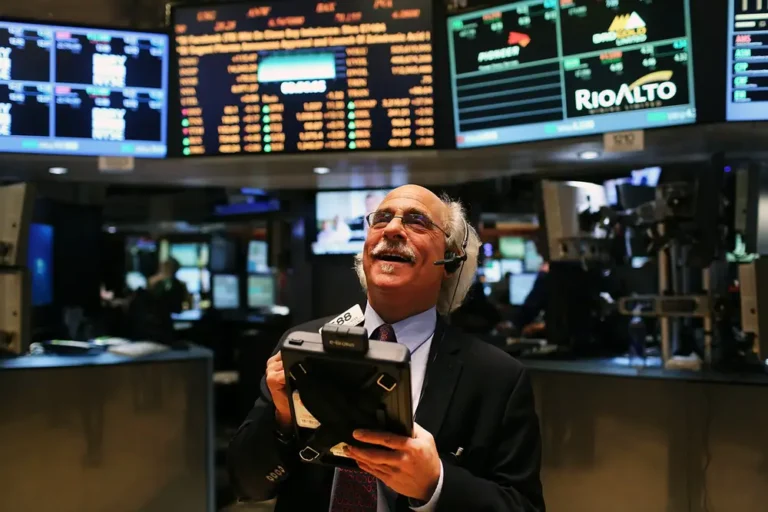A veteran bond operator shares an alpha-generating strategy for dropping yields and muted stock-market returns

A diversified investing strategy means a split between stocks and bonds, at minimum. But for the better part of the last two decades, interest rates were near zero, and real returns in bonds were lacking.
Still, investors added them to their portfolios because history has shown us that asset classes can zig and zag, with long periods of stock market outperformance relative to bonds and intervals where that dynamic flipped.
The last two years were great for both asset classes. Elevated rates put the bond market back on investors’ minds, while the S&P 500 had a solid 26% total return. But depending on who you ask, the future may not be as bright.
Yields will be less attractive as the Fed begins its rate cuts for this cycle. Meanwhile, Goldman Sachs expects stock-market returns to be muted for the coming decade. The S&P 500 is predicted to see a mere 3% annualized return over the next 10 years, which could lag the 10-year Treasury at an expected 4% yield, according to a recent note by the investment bank’s chief US equity strategist David Kostin.
If the bears are right, investors may be forced to take on more risk for returns. Sounds gloomy, but for bond traders like Mark Rieder, who has over two decades of experience in the sector, it could be an opportunity to dig for bargains in corporate credit.
Generating alpha for a credit trader could mean beating a peer, a Bloomberg fixed income index that matches the category of bonds traded, or simply remaining in positive territory in terms of total returns when the market is down, Rieder told B-17.
“Over the past 10 years, when interest rates were very low, it was not an exciting time to be a credit analyst and a portfolio manager,” Rieder said. “But it’s much more interesting today, and I’m really excited about that.”
However, active debt investing takes a good level of skill and consistent effort to make the right credit selection, according to his new book, “Reminiscences of a Bond Operator.” Like the stock-picking process, following the crowd or consensus won’t result in alpha. A credit trader must conduct the same level of fundamental analysis and dig into a company’s balance sheet, earnings calls, 10Qs, and 10Ks, among other things, to determine valuation.
“I’ve always believed that a good credit analyst is also a really good equity analyst because you really need to understand the capital structure of the companies that you’re evaluating and all of their different needs,” Rieder said. “Most companies want to have their stock price go up, and so as a credit analyst, you need to understand that so that you can understand what their motivations are.”
It’s especially important now, as the credit space faces its own set of challenges. Like the business cycle, credit has its booms and busts based on macro conditions and supply and demand. In a strong economic environment, corporate cash flows rise, and companies increase borrowing with favorable lending terms. But when times are tight, companies deleverage until their debt is less than their cash flow. Once that equilibrium is satisfied, more borrowing ensues, according to his book.
Rieder said credit is in the boom part of the cycle. This might sound surprising, considering debt has been expensive for the better part of the last two years. But most companies were locked into low yields before rates rose, he noted. As debt turnover increases, investors need to be cautious.
“There’s a lag impact on the increase in rates. Most companies borrow for long periods of time, five years, 10 years,” Rieder said. “A lot of companies issued debt when interest rates were very low. They’re now only starting to refinance that low-coupon debt. That, in turn, is what causes an impact.”
He doesn’t expect that the Fed’s cutting cycle will mitigate the crunch. The central bank can impact front-end yields, but the back end is driven by additional considerations, he noted. The 10-year rose to 4.3% shortly after the first rate cut of September, a signal that investors were looking ahead at other economic risk factors, including concerns over the government’s ballooning deficit, he added. Additionally, economic conditions such as elevated credit card debt pose concerns for future corporate profits.
Trading credit
Right now, investment-grade credit spreads are tight. The yields in corporate bonds aren’t much higher than in government bonds, meaning less compensation for more risk. But if we move from the boom to the bust phase, credit spreads could widen, and that could create opportunities in the credit space, he said.
While spreads are tight, he prefers front-end yield or pairing trades with cheap optionality. The cost of shorting a credit index like the CDX Investment Grade 5-Year Index, a credit-default-swap index that tracks the credit risk of large US investment-grade companies, is low. And since spreads are trading at historically tight levels, it’s less likely to get much lower, which could limit potential losses, he said. This position can then be paired with a trade expected to perform positively.
An example he provides of a market-neutral pair trade could look like buying a corporate bond in a sector with structural tailwinds, such as a natural gas producer set to benefit from increased demand and rising energy prices, or airplane lessors who benefit from higher lease rates due to a tight aircraft supply — a situation that’s unlikely to ease in the near term because of production challenges faced by manufacturers. Then, take a short position in an interest-rate future to hedge against the bond’s interest-rate risk.
“This trade works if natural gas prices remain stable or rise, leading the energy bond to outperform the overall corporate bond market,” Rieder said. “It’s an excellent opportunity to capitalize on the current tight credit spread conditions and complacency in the overall credit market.”
Having liquidity can also give you an upper hand. As spreads widen, investors may be forced into selling higher-quality credit because they can’t offload the lower-quality ones, he said.
“There are huge opportunities in credit if you remain liquid during dislocations,” Rieder said. “Other investors are going to be looking for liquidity. They can’t sell what they want to, so they sell what they can, and that can lead to opportunities to buy cheap assets.”






